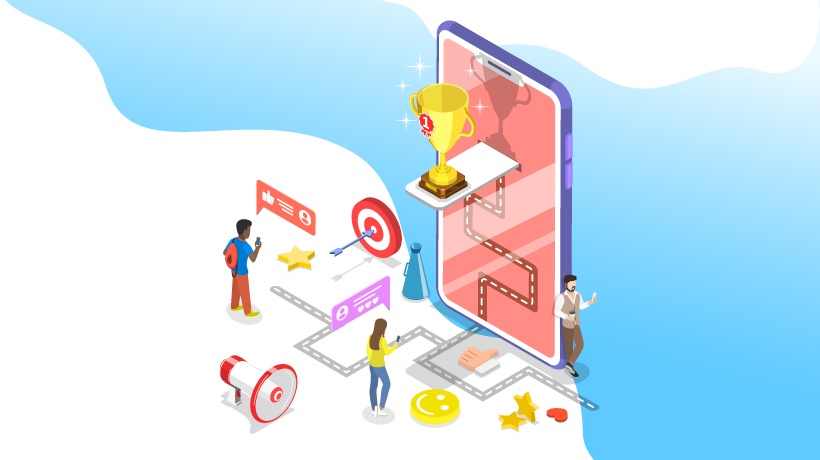Learn How To Successfully Gamify Content Marketing
How to get content marketing to be even more effective? Gamification marketing can be a solution for you. With gamification strategies, you can attract customers and engage them much more easily.
What Is Gamification, And How Can It Impact Content Marketing?
Maybe you’re not familiar with the concept of gamification. In short, gamification is to apply concepts that are used in games such as scores, rankings, and competition to other areas such as marketing.
The main advantage is that this technique helps users to be more engaged. You can integrate it into non-gaming experiences and use rewards to motivate users. Overall, it’s considered an effective strategy to engage people to talk more about your brand and interact with it.
1. Understand Your Audience Well
It’s almost a cliche to say that you need to know your audience in content marketing strategy. However, it’s the truth. The importance of knowing your audience cannot be overstated in gamification marketing. You’ll use considerably different strategies for different businesses. A healthcare technology provider doesn’t have the same needs as an online casino, for example.
In the case of healthcare IT companies, you’ll be dealing with clients that don’t necessarily have experience with gamification strategies. If your client is a casino operator, its clients are all gamblers. They are used to games and will understand the advantages of your gamified content system. So, they will get into this kind of content quickly.
Understanding the differences between these two different audiences will help to determine your approach. Will you tread carefully to offer perks that your audience understands? Or should you be more aggressive? Your audience will tell. So, be sure to research it thoroughly.
2. Look For Proven Methods
So, you already know your audience. Whether people are looking for healthcare technology or casino games, you should know what attracts and delights them. The next step is to look for proven methods in gamification marketing. Again, research is essential during this phase. Look for case studies of other brands. Are your competitors using gamification strategies? Dissecting what other companies made right is a powerful indicator of what might work in your case.
Here are some examples that might work. In the healthcare technology industry, a referral system might work as gamification marketing. You can also use a sharing system in which people get rewards for engaging others to read your content.
These are clear rewards and incentives toward making others help your business to grow. If you used a system that was too complex, people would possibly not bother with it in this case.
In the case of a casino, however, there are no limits to how to use gamification strategies. The customers are used to all kinds of games, and they can easily spot reasonable offers. Offering bonuses and creating loyalty systems is a proven formula here.
3. Determine Clear Goals
No content marketing strategy works without clear goals. Getting all the attention in the world doesn’t mean a thing if you’re trying to sell a product or service, and this attention doesn’t convert into sales.
Before you launch any gamified content, you need to set up key goals. Examples would be to increase your followers by a certain percentage or to improve the sales of a product. Without these metrics, you cannot differentiate success from failure. It’s fairly possible to get a lot of engagement and still fail, for example. If you want to increase feedback on patient experience or get clients from a casino to spend more money, this is your metric. Sometimes, gaining popularity online is not enough. Other times, it might be.
4. Structure Your Reward System Accordingly
If you took all these three tips into account, it’s time to structure your reward system. No gamification strategies work without rewards. According to Kate Richards, an expert in the industry, rewards for the gamification strategies need to be compatible with your goals. You can’t spend more money on them than you will gain later. However, people need to be interested enough to keep paying attention to what you’re doing.
You can look at the two examples that we’ve been using in this article: the healthcare technology industry and casinos. In the case of the healthcare industry, say that you've developed a system to improve the patient experience. It’s possible to implement a reward system in which people who share and get likes for content about the launch of the upcoming product get rewards. In the end, you can measure how effective the launch was against your expectations. If it exceeds them, you were successful.
Now, look at the casino example. Most places already use loyalty systems. They are fairly useful as gamification marketing tools. In this case, you’re in a very gamified industry. So, to stand out, you need to be creative. Examples of strategies can include mission-based accomplishments that reward people for doing "tasks" for the casino. You can include leaderboards too. This way, people can see who's at the top. Including social media in your strategy is also a good tip.
5. Consult With Professionals
If you’ve never devised gamified strategies for content marketing before, it’s important not to rush in. Beginners can make mistakes and end up losing money. You may need to consult with professionals before you implement any of these systems. Only this way, you’re guaranteed to be successful. Experience is essential when using gamification marketing. So, it's advisable to consult with professionals before you do anything.
Conclusion
What’s the best gamification marketing plan? The one that fits your audience, has clear goals and helps you to achieve your goals. No content marketing strategy is perfect for everything. So, knowing how to adapt is key.
Are you interested in more marketing news and updates? Join our email list and stay informed!

